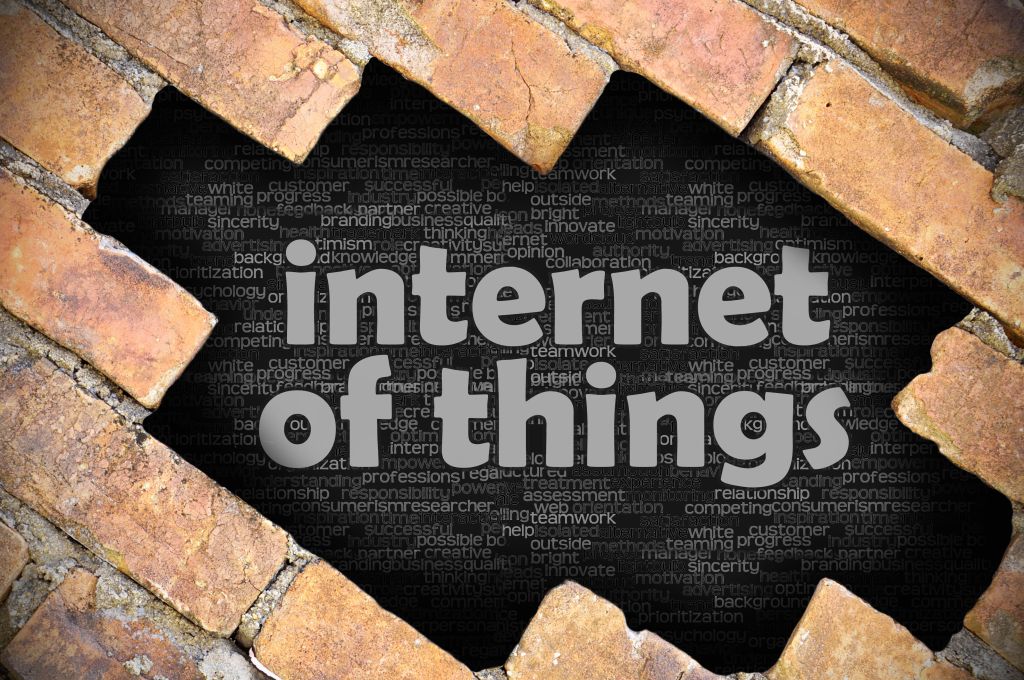Internet of things (IoT) has become a hot space for innovation over the last few years. Smart thermostats, smart light bulbs – heck even internet connected smart sprinkler systems.

Where is this going and what opportunities does this open up for innovators working with the internet of things (IoT)?
This week, we have the CEO of Ioterra (iotatracker.com) Ben Wild joins us to talk by IoT and how his firm is solving some of the technical challenges that face this new and emerging industry.
Some of the topics we cover include:
- Where did the idea of Iota come from?
- Why did you go with crowdfunding (Kickstarter) as your way to bootstrap?
- What were some of the challenges you came across?
- What would you do differently?
- What are the plans for your network that you are building?
- What are the challenges in the Internet of Things space?
- Do you think some form of compatibility will emerge in the IoT industry?
- Where are there still innovation opportunities in the Internet of Things space?
Show Links:
- $10.00 off purchase of an Iota Tracker. Use discount code INNOVATION at iotatracker.com
- Ben Wild on LinkedIn
Killer Question:
Lately I’ve been hearing a lot about the impending retirement surge caused by baby boomers finally leaving the workplace and how it will affect changes in the tech industry. The combined worth of this market segment is roughly in the $2 trillion bracket. That’s a lot of disposable income—and a lot of freed-up time for them to engage with new products, new hobbies, and new life goals. I mention the boomers because they represent a truth about customer bases: They are always in flux, and you need to constantly be thinking about how you can modify your sales approach to appeal to them. When you’re looking for ways to reach out to new customers, keep in mind that you need to think of new ways to reach existing customers as well. An existing customer base still has the potential to change so radically that it can essentially become a new customer base as their passions and needs change over the years.
I’ve been interested to see how the health-care industry responds to the evolution of its existing customer groups, and the influx of new groups of aging patients dealing with the chronic diseases associated with age and poor lifestyle choices. A number of companies have become interested in using technology to support health care by reversing the idea of a patient traveling to see a specialist at the specialist’s office. These companies are in trials around the broad concept of “remote medicine,” which allows for highly interactive virtual medical appointments. A nurse examines a patient while a specialist—perhaps in another city, state, or even country—observes and directs via video conference. The nurse and the equipment can be stationed either in a local doctor’s office, or potentially in a mobile clinic. This is a huge boon for a massive section of the American population—those people who live hundreds or thousands of miles away from specialists but require frequent appointments and checkups. Remote medicine companies have upended the traditional experience of how a patient and specialist meet and interact. By doing so they have created a system that has the potential to not only vastly reduce the associated health-care costs but also allow a whole new customer group to utilize their services.[i]
Sparking Points
- How are you currently reaching out to new customers?
- To what extent do your sales approaches determine who your customers are? Is this a good thing or a limiting thing?
- What would happen if you applied a sales approach that is radically different from the one you currently focus on?
Subscribe: RSS


I understand the need for some to develop proprietary solutions. They can get a product to market quickly and give the developers ultimate control of their product. Now, in my opinion, to be part of the IoT a device and/or system needs to be one of three infrastructures. WIFI for the high bandwidth media, Bluetooth for the body area network and ZigBee for the machine to machine networks.
The ZigBee Alliance, a member driven organization, created individual solutions for specific needs like health, home, commercial building, lighting, smart energy, retail… early on. Soon it became very apparent that the IoT was turning into a fragmented Internet of Islands of Things and making Interoperability a huge challenge. To address this issue ZigBee and the 450 member companies worked very hard to consolidate all prior ZigBee Alliance specifications under our recently announced ZigBee 3.0 solution. In addition, work through liaisons including recently announced work with Thread and EnOcean we are taking great strides for the Interoperable Internet of Things and a meaningful consolidation of standards
Businesses and end consumers are getting away from proprietary solutions which lock them into a particular provider’s product line, service and support. Ultimately they want a common infrastructure with the ability to select the device they need, just ‘pop it in’ and start using it. I can envision in time with our work and liaisons with other industry organizations on standards for the smart city, commercial building, smart home, smart grid and smart meters that we will have that global mesh network that allows companies and startups to reduce time to market and reduce costs by creating a unique device or app without having to develop and support an entire ecosystem. And if there is something missing from our standard any company can join the ZigBee Alliance and help shape the future rather than having to ‘go it alone’ or wait for others to define the future for them.
John E. Osborne II
Chairman, The ZigBee Alliance